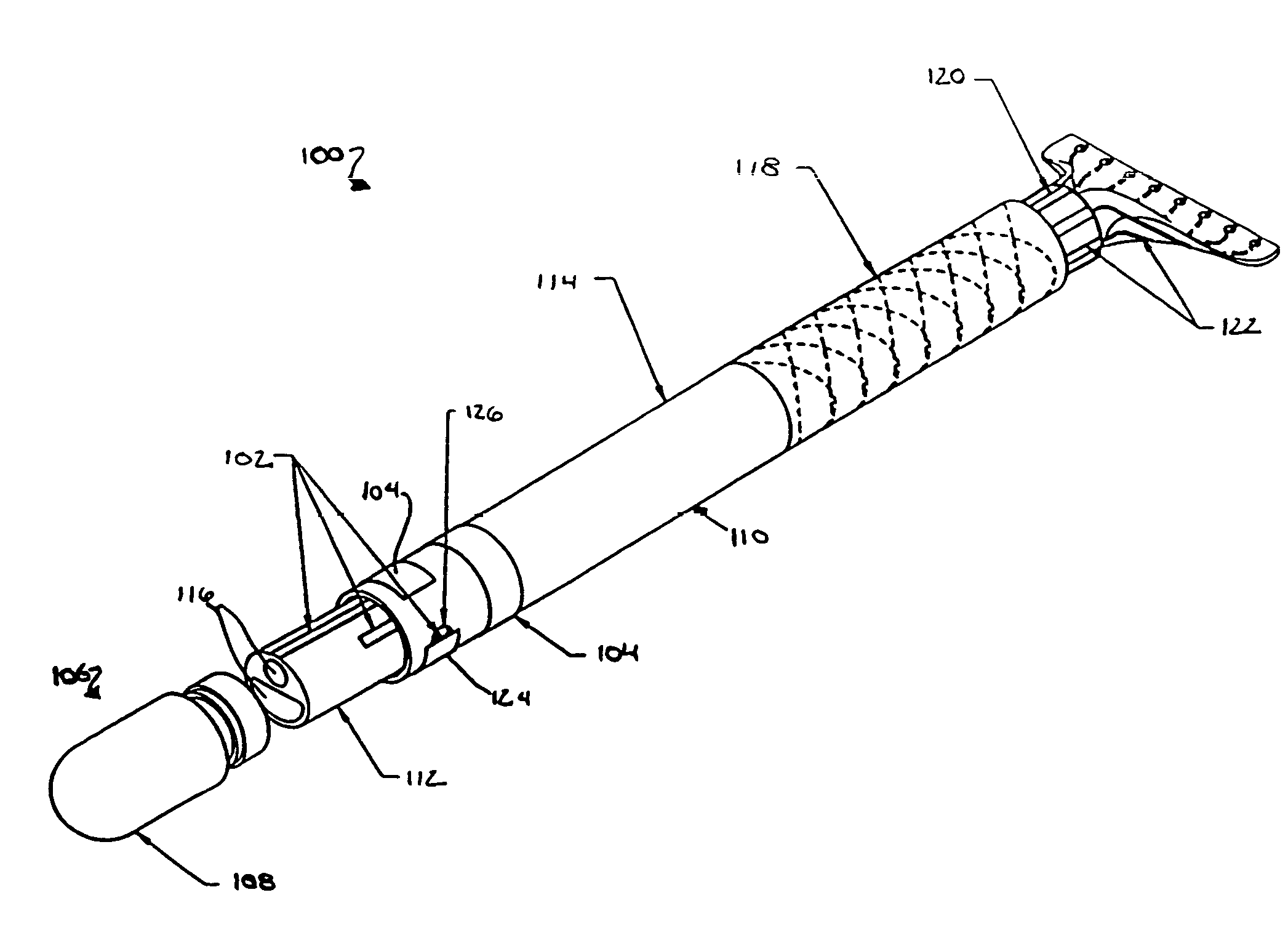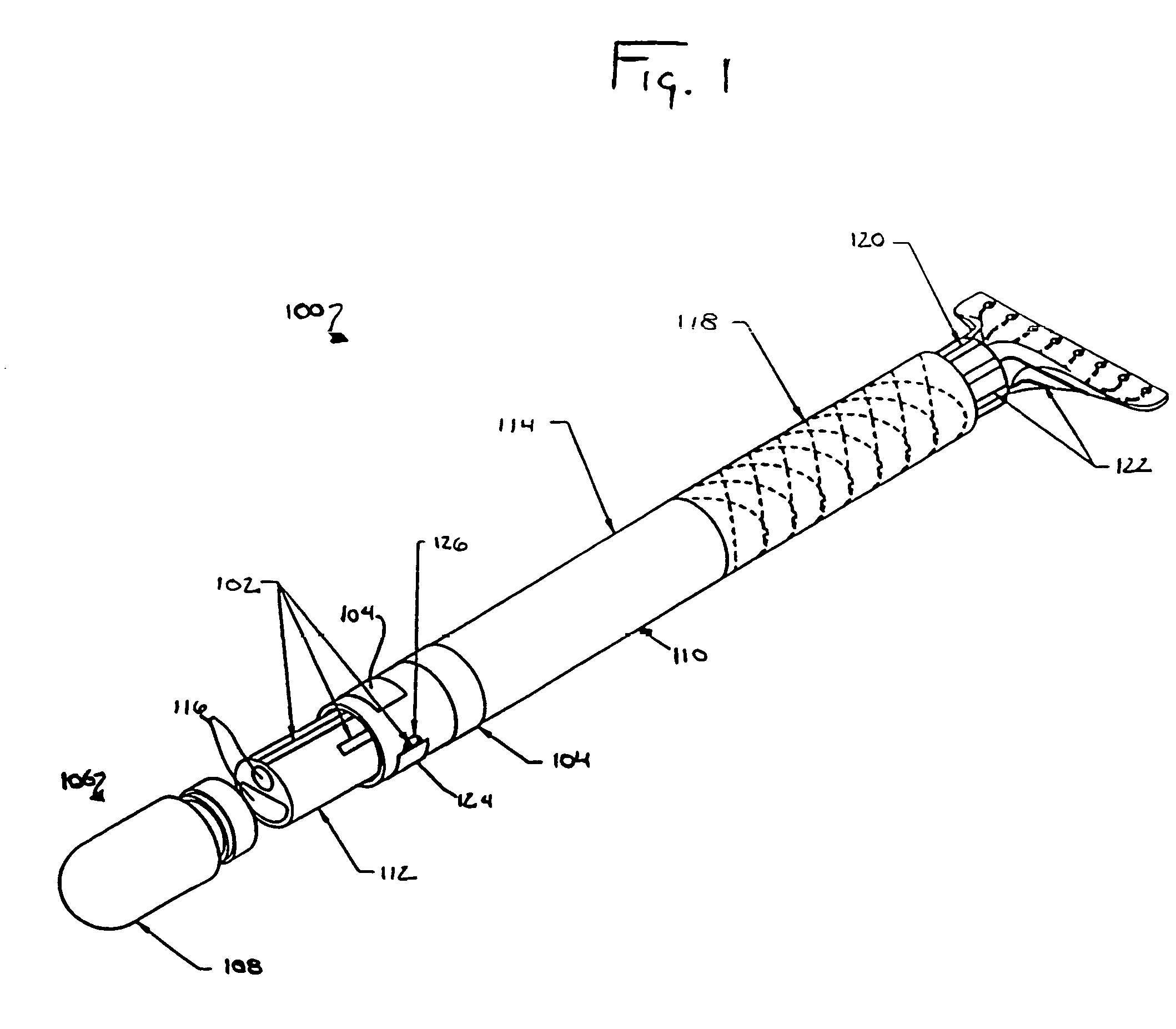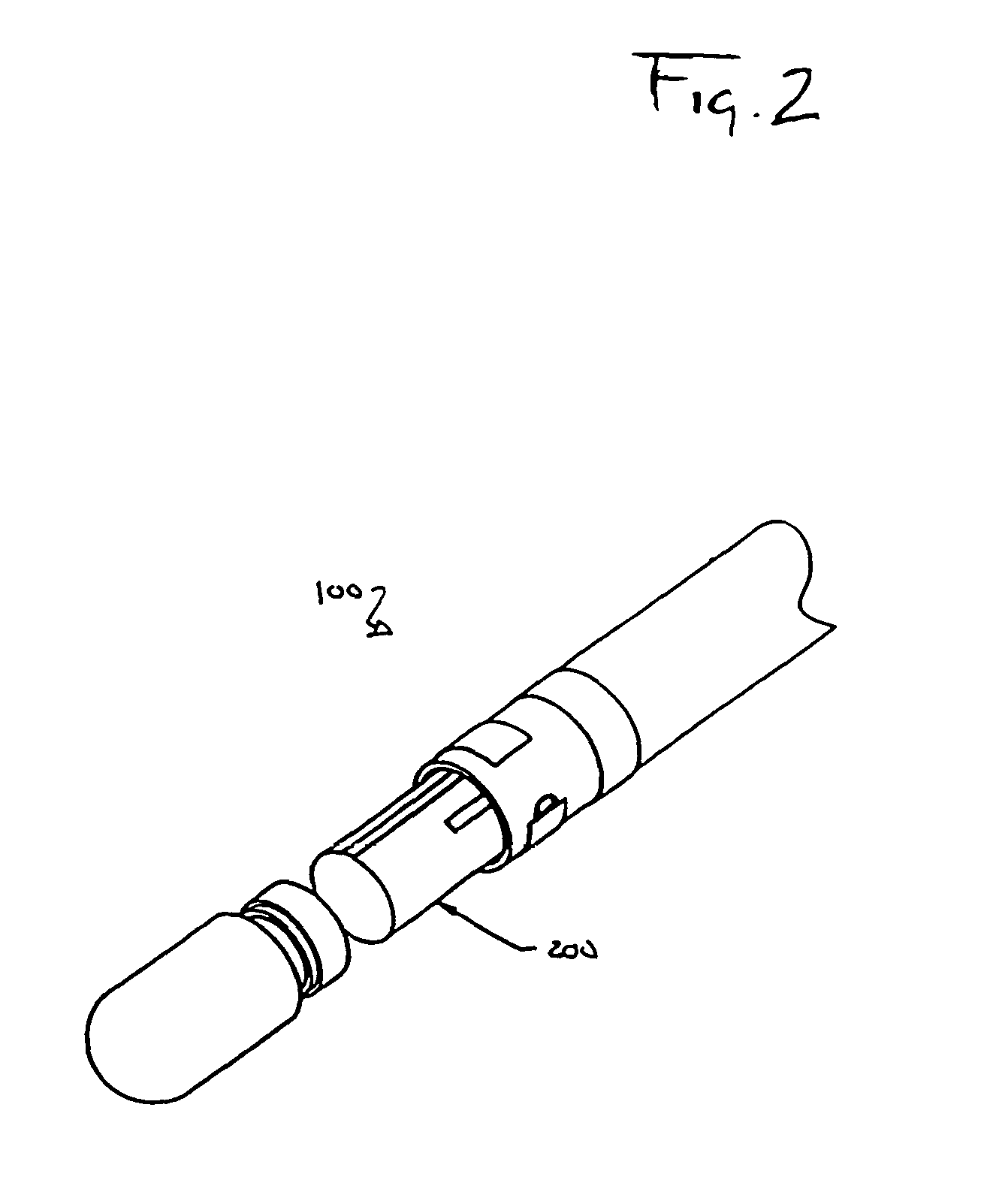Medical device having integral traces and formed electrodes
a medical device and integral trace technology, applied in the field of medical devices, can solve the problems of difficult connection of the difficulty of attaching wires to the appropriate connector pins of medical devices, and the difficulty of identifying the problems identified above,
- Summary
- Abstract
- Description
- Claims
- Application Information
AI Technical Summary
Benefits of technology
Problems solved by technology
Method used
Image
Examples
embodiment 600
[0086]As with the embodiment of FIG. 4, the outer jacket 114 of the present embodiment 600 may be made of multiple outer jacket segments 404, 406. These segments may be bonded to one another, or may each be bonded to the layer directly beneath them. Further, braided material 118 may be included in an outer jacket segment 406.
[0087]Similar to the single-tube catheter 100 discussed with reference to FIGS. 1 through 4, the present embodiment 600 includes a shoulder configuration 606. Part of this shoulder 606 is formed by a first inner layer 608, which abuts the first tube. Here, however, a second inner layer 610 forms a second portion of the shoulder 606 for contact with the inner tube 604 defining the lumen 116. This second shoulder portion is optional, but may provide additional security with respect to properly seating a tube. Further, the second shoulder assists in properly aligning any inner tube traces 102d within the catheter assembly.
[0088]FIG. 9 depicts a cross-sectional view...
embodiment 500
[0090]FIG. 10 depicts an isometric view of the adapter 900 mentioned in the discussion of FIGS. 6–9. Generally, this adapter embodiment differs from the embodiment 500 shown in FIGS. 1–5 in that it includes dual layers of longitudinally aligned adapter traces 122a, 122b. The mating of the adapter 900 with the catheter 600 was previously discussed with respect to FIGS. 1, 5, and 9. The adapter 900 is shown with an outer jacket 500.
[0091]Typically, the adapter outer jacket 500 is formed from a nonconductive material that may or may not be identical to the material used to form the catheter shaft 110. The adapter traces 122a, 122b may be exposed on the plug portion 1000 of the adapter (i.e., the portion of the adapter fitting within the catheter). Typically, these traces are concealed within the nonconductive catheter shaft 110 once the adapter 900 is mated with the catheter 600. Further, the traces 122a, 122b are generally embedded within the nonconductive material of the adapter jack...
embodiment 900
[0093]FIG. 11 depicts an alternative embodiment of an adapter 1100. In this embodiment, the adapter 1100 lacks the planar structure, or fan tail 1002, of the embodiment 900 shown in FIG. 10. Instead, the adapter traces 122 terminate in conductive prongs 1102 extending rearwardly from the adapter. Further, unlike the adapter 900 of FIG. 10, the present adapter 1100 has a reverse stair-step configuration 1104 at the end designed to mate with the catheter. Accordingly, rather than inserting a portion of the adapter into a catheter 100, the catheter is at least partially inserted into the adapter. This requires the distal end of the catheter 100 to have a mating stair-step protrusion. The shoulder 1104 inside the adapter 1100 longitudinally aligns the catheter with the adapter. It should be noted that either type of adapter (one having a fan tail or cylindrical prong arrangement) may be used with either catheter mating configuration.
[0094]FIG. 12 depicts the adapter 1100 of FIG. 11, as ...
PUM
 Login to View More
Login to View More Abstract
Description
Claims
Application Information
 Login to View More
Login to View More - R&D
- Intellectual Property
- Life Sciences
- Materials
- Tech Scout
- Unparalleled Data Quality
- Higher Quality Content
- 60% Fewer Hallucinations
Browse by: Latest US Patents, China's latest patents, Technical Efficacy Thesaurus, Application Domain, Technology Topic, Popular Technical Reports.
© 2025 PatSnap. All rights reserved.Legal|Privacy policy|Modern Slavery Act Transparency Statement|Sitemap|About US| Contact US: help@patsnap.com



